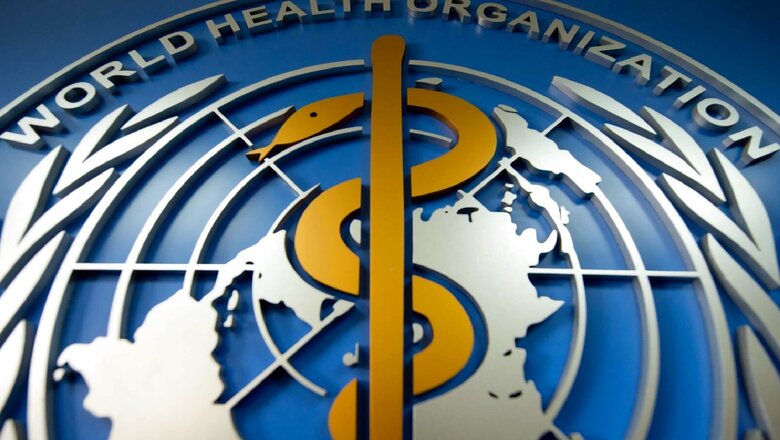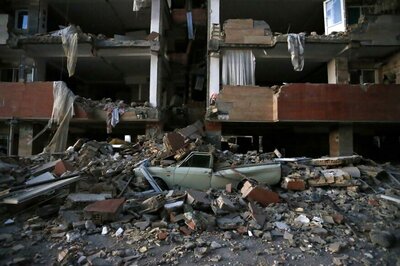
views
The New York Times has recently learnt through undisclosed sources that India has been opposing the World Health Organisation study which calculates excess mortality. Immediately after the publication, a letter from India’s Press Information Bureau explaining why the methodology used by the study is inaccurate has been doing the rounds.
There are two major problems with the WHO study which particularly stand out: the first is the fact that the WHO study has chosen to categorise India as a Tier II country alongside Egypt, Indonesia, Bangladesh, Syria, Iran and such; using the same methodological model for all these aforementioned countries. With the peculiarity of the vastness and diversity of India, a one-size-fits-all model is not possible to use even countrywide, let alone across countries.
WHO’s team working on this study hasn’t deemed it right to consult or collaborate with Indian experts to vet the process or understand Indian systems, taking a high-handed approach. The second problem is that with the countries it has classified in Tier I – the US, Western Nations, Iraq and such – it adopts a holy-grail approach where self-reported mortality numbers from these countries are considered true, unquestioningly.
India uses not one but two systems to calculate mortality – the Civil Registration System and the Sample Registration System. The CRS records deaths from local governments across states, finally collating the numbers at the Centre. The SRS uses a demographic survey tailored to India’s characteristics which is conducted among 8-9 million people across states and Union Territories, across rural and urban units and then adjusted to the entire population. Often, we find discrepancies even between CRS and SRS, due to the unreliable nature of a demographic survey like SRS.
For instance, due to better medical infrastructure in urban India, people often travel to these areas for treatments, causing a spike in death rates around the treatment centres as compared to rural areas. If one was to look at this urban data at face value and even worse, generalise it to the entire Indian population, it would lead to unreliable inferences. That is the rookie mistake that studies like the WHO or even other groups attempting to calculate excess mortality in India are making. Consumer Household Pyramid surveys or other such methods are so unreliable in their outcomes, that two different groups using the same methodology also spit out numbers so distant from each other that they cease to be statistically significant and void of scientific rationale. The true mark of scientific rigour is when the same methodology used by any number of groups on the same population churns out similar results: this remains absent in the methodology used by WHO’s team.
The timing of the leaked details of deliberation between India and the WHO to the New York Times is rather suspicious, failing the smell test. The virus, which has originated in Wuhan, China is, even today unleashing its wrath in China where some of the country’s largest cities have been under an aggressive lockdown for over weeks. Families are running out of food, children having to sleep hungry and people possibly dying in their apartments, which they are not allowed to step out of. The desperate cries for food, which make their way to social media platforms after escaping the tough government censorship, only scratch the surface of the gravity of the crisis in China. It is no secret that WHO has been lenient towards China right from the get-go: be it questioning the origins of the virus, stalling the lab leak theory, failing to call out the pandemic until much after the devastation it caused across countries or even waking up to the air-borne characteristic of the COVID-19 virus much after the rest of the world. Due to such dubious decisions, WHO’s credibility has been shaken to its core.
New York Times by its own admission has not been able to confirm the satisfaction of the outcome of WHO’s study with sources in any other country, but India. Incidentally, India has run the most successful, widespread vaccination drive in the world, with our vaccines potentially more effective than all others available globally. It has not witnessed widespread anti-vax movements where a major portion of the population has refused to take the vaccines as seen in countries classified as Tier I in the WHO study. In all of these countries, a significant portion of the population has not only remained unvaccinated and vulnerable to the virus, but death rates during the Omicron wave have been directly proportional to the rate of the unvaccinated population in these countries. Conversely, in India, death rates remained much lower, despite a surging Omicron wave, due to our widespread vaccination coverage.
It seems like the New York Times piece has been specifically targeted at India, further sensationalised with the help of global influencers and leaked information from WHO to divert attention from the vulnerability of some western nations to the virus due to their unvaccinated populations and the urgent, humanitarian crisis unfolding in China due to the virus’ relentless spread compounded with the inability of the Chinese government to provide bare essentials to its people.
India has no objections to studying mortality figures and believes that accurate data is essential in helping the world learn about the pandemic. However, motivated studies which use shaky methods with the single goal to discredit us and our achievements which are now clear for the world to see, have no place in scientific literature and should be at best classified as fiction.
The writer is a policy and communications strategist. A Nation to Protect: Leading India Through the Covid Crisis is her third book. The views expressed in this article are those of the author and do not represent the stand of this publication.
Read all the Latest Opinion News and Breaking News here




















Comments
0 comment